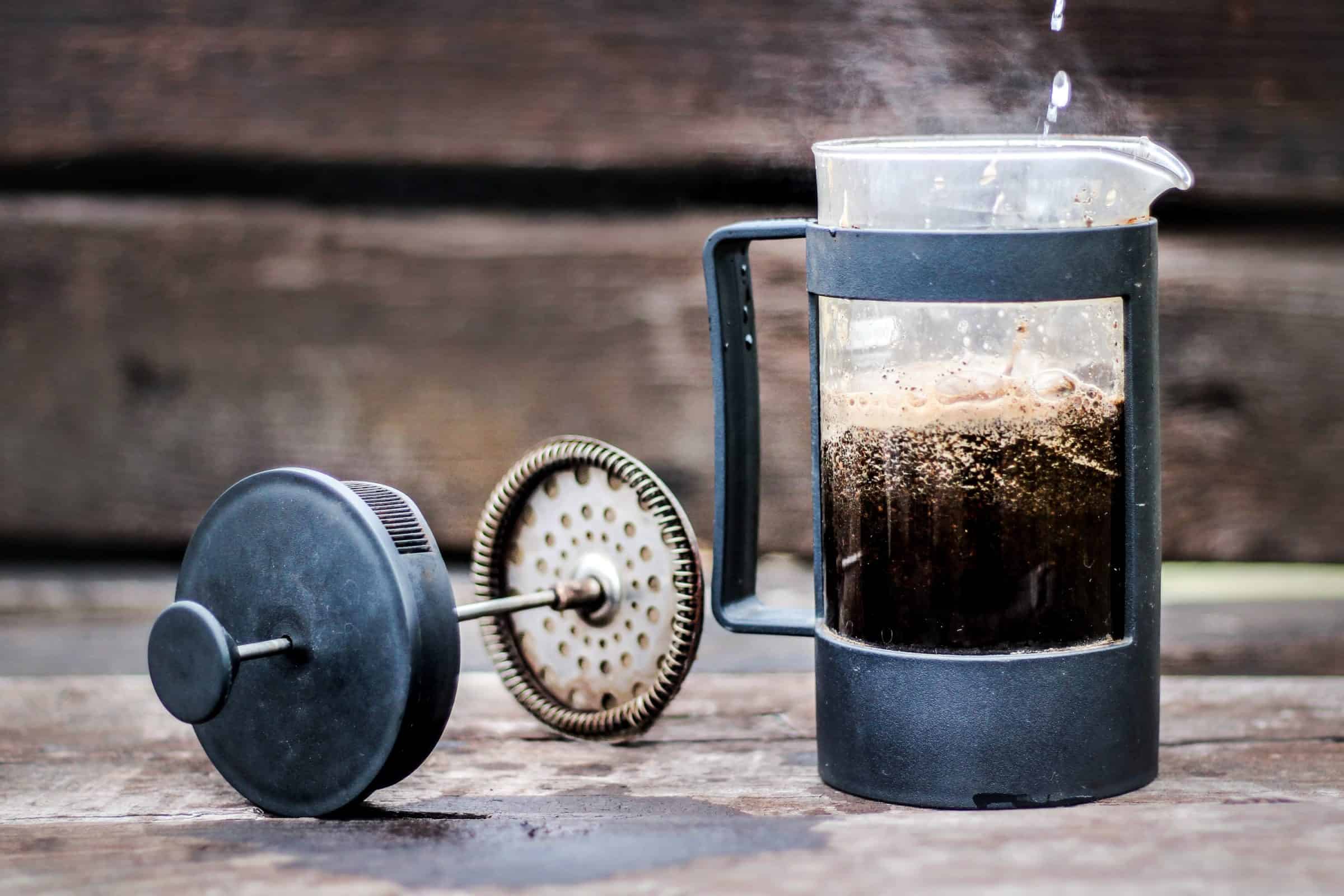Affiliate disclosure: We are reader-supported. This means that we may earn a commission if you buy an item using one of the links. For our reviews, we purchase products ourselves and review them independently. Read more about our methodology.
Summary of Differences
Below we summarize the key differences between French presses and pour-over coffeemakers. Generally speaking, the important differences between French press and pour-over have to do with how easy they are to use and the taste of the quality produce.
A French press, in our opinion, is easier to use than a pour-over coffee maker, but a pour-over coffee maker produces a smoother taste.
| French Press | Pour-over | |
|---|---|---|
| Prices | $20 - $120, with some high-end models above $200 | $8 - $50, with some high-end models above $100 |
| Brewing method | Press | Pour-over |
| Supplies needed | None | Paper filters are generally needed (some models may work with a reusable filter) |
| Grind size | Coarse grind | Medium-coarse grind |
| Sizes offered | Single-cup to multi-cup | Single-cup to multi-cup |
| Other uses | Tea brewer; manual milk frother | None recommended |
| Storing and reheating coffee |
|
|
| Cleaning | It depends on the make and model, but most French presses are handwash only | Many types are dishwasher safe, but be sure to check the manufacturer’s manual |
| Materials | French presses can be made from glass, stainless steel, ceramic, stoneware, or other materials. Many French presses have plastic handles, caps, or feet | Pour-over coffeemakers can be made from ceramic, glass, metal, or other materials. Many styles do not have any plastic elements |
| Great for… | Newbies; alternative uses | Smooth taste; ease of cleaning |
Brewing Differences
As its name implies, a pour-over coffeemaker brews coffee by pouring hot water over coffee grounds in a filter. The hot water brews the grounds and drips through the filter as coffee. Generally, you need to let coffee in a pour-over bloom. This means wetting the coffee with a bit of hot water to allow it to bubble and let gases escape, which reduces bitterness. Then you’ll pour over the rest of the hot water to brew the coffee.
There are many different types of pour-over coffeemakers. Some are designed to sit directly on a mug and make one cup of coffee. Others, like the Chemex, are carafe-style which allows you to make multiple cups at once. Pour-over coffee makers may be made from glass, ceramic, metal, or other materials.
A French press is a press-style coffee maker. When using a French press, you place coffee grounds and hot water into the carafe. You let it steep for several minutes before pushing down a plunger that contains a filter. This helps extract additional oils and flavonoids from the coffee and ensures you don’t get any coffee grounds into your drink. You can then pour out the coffee to enjoy.
French presses also come in a variety of types. There are single-cup French presses as well as multi-cup. French presses are typically made from a mixture of materials, including glass, plastic, stainless steel, and ceramic.
Grind Size
Generally speaking, French presses use a coarser bean grind than a pour-over. This is because you let the coffee grounds steep in hot water. A French press requires a coarse grind whereas a pour-over coffeemaker generally requires a medium-coarse grind.
Storing and Reheating Coffee
After using a pour-over coffeemaker, it’s easy to store and reheat coffee. Because the water passes through the coffee grounds, you don’t have to worry about your coffee brewing too long and becoming bitter. In carafe-style pour-over coffeemakers, you can generally leave the coffee in the carafe.
Some styles even include lids if you want to store the coffee in the fridge. Some carafe styles are also safe to place directly on a glass or gas flame stovetop on low heat to reheat the coffee. Make sure to check your model’s instructions or user manual before trying this. For single-cup styles, we hope that you drank your cup of coffee, but if not, it’s easy to reheat in the mug.
With French presses, it’s recommended that you store and reheat your coffee in a different container. Because the coffee grounds stay in the French press, the longer the coffee sits in the French press, the more bitter it will be. Many French presses may not be microwave-safe, and it is not recommended to place them directly on a stovetop.
Cleaning
Pour-over coffeemakers are usually easier to clean than French presses. Most pour-over coffeemakers require that you put the coffee grounds in a paper filter. This means cleaning them is as easy as throwing the filter away and rinsing out the pour-over maker. Many pour-over coffeemakers are also dishwasher-safe.
A French press has two parts: a carafe and a plunger. Because the coffee grounds stay in the carafe, the French press needs to be cleaned well to remove the coffee grounds from the carafe and plunger. Most types of French press are not dishwasher safe.
Price
A mid-tier French press with a 30 to 35 oz capacity ranges from $20 to $30. These are usually made of glass with plastic and metal components. Higher-end French presses or larger sizes range from $40 to $120, with expensive models over $200. These styles may be made from double-walled stainless steel, ceramic, or other higher-end materials.
Pour-over style coffeemakers generally range from $8 to $50, depending on the style. A single-serve ceramic pour-over that sits on a mug will run about $8 to $10. A carafe-style one, meant to serve multiple cups of coffee, generally runs from $20 to $50 depending on the size and manufacturer. High-end carafe-style pour-over coffeemakers may run over $100.
Which One Do We Prefer?
We use both a French press and multiple types of pour-over coffeemakers at home, though we favor the pour-over. We use both single-cup and multi-cup pour-over coffeemakers. The single-cup type is great if you’re only making coffee for one. We also use a Chemex, which is a carafe-style pour-over coffeemaker, when making coffee for more than one.
We love the smooth taste produced by pour-over. In our opinion, using a pour-over produces some of the best tasting coffee, so it's worth learning the ins and outs of how to use one.






